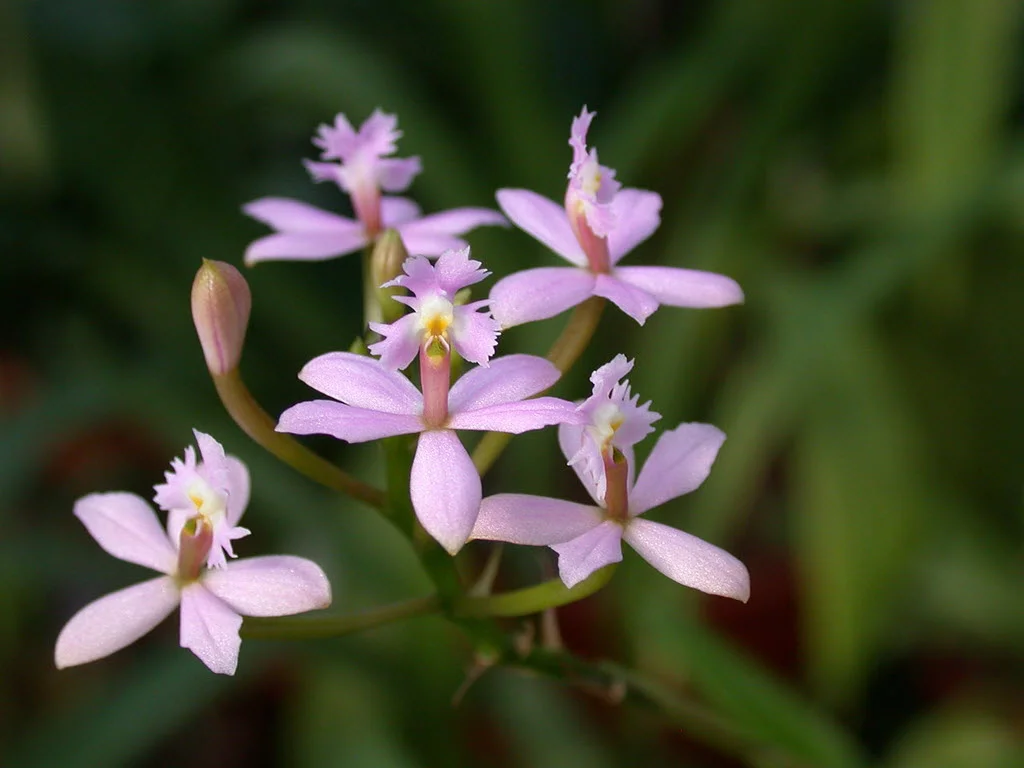Table of Contents
Pronunciation: sye-COP-siss
Other Names: Butterfly Orchids
Introduction
Psychopsis orchids have flowers that are unique to the plant world. Three long sepals grow upwards from the top of the orchid while two petals grow off the side of the orchid. The orchid's lip is a broad petal that reaches downward hence the name Butterfly Orchid.
Psychopsis kalihi
This orchid's pseudobulbs are clustered tightly together, and each pseudobulb produces a single leaf and a succession of flowers. The flowers traditionally bloom for ten days per cycle, and they come in vibrant yellows, oranges, reds, and browns.
Temperature
You'll find that this orchid is quite forgiving of temperatures fluctuations, and they can survive large changes relatively unscathed. During the daytime hours, they like a temperature range between 80°F to 90°F (27°C to 32°C) because they come from tropical regions. During the nighttime hours, temperatures can drop down to between 60°F and 65°F (16°C to 18°C) without a problem.
During the winter months when this orchid goes through a rest period, they like slightly cooler temperatures. During the daytime hours, temperatures should stay between 82°F and 84°F (28°C to 29°C). Nighttime temperatures should ideally stay between 55°F to 58°F (12°C to 14°C).
Light
Depending on your light conditions, you'll have different blooms. They like partial shade, and they don't tolerate direct sunlight. If you keep your orchid under brighter conditions, your flowers will be duller shades and smaller. However, the more shade your orchid gets, the fewer flowers it produces but the flower will be larger and more brightly colored.
If there is no way you can keep your orchid under shadier conditions, you can help them tolerate higher light levels by providing constant airflow and higher humidity levels.
Water and Humidity
In their natural habitat, Psychopsis orchids see moderate to heavy rainfall totals. This plant likes to be moist, but it likes to dry out between watering as well. During your orchid's active growth period in the spring and summer months, you will want to water them every two to three days.
You may need to increase this if the temperature is hotter to every morning, but make sure you're not overwatering them as well. During your plant's rest period in the fall and winter months, you should only water them once every two weeks to prevent root rot. They like humidity levels between 75% and 85%.
Feeding
Feed your plant a well-balanced fertilizer once a week in the spring and summer months. Dilute this fertilizer mix to one-half or one-quarter strength before you feed your orchid. You want to flush your orchid between fertilizer applications to prevent buildup.
In the early fall months, you may want to switch your fertilizer to higher phosphorus and lower nitrogen mix to promote healthy growth and blooms in the spring. Cut back your feeding to once a month until you begin to see new growth.
Potting
You can grow these orchids in pots or mounted on slabs of wood. If you choose to mount them, you'll need sphagnum moss to help them retain water. If you grow them in pots, they need a fast draining, light mixture to thrive.
Your potting medium should contain perlite, sphagnum moss, charcoal, and fine-grade tree fir fiber. Ideally, you want 10% perlite, 10% charcoal, and the rest to be the fine-grade tree fir fiber. You should only repot your orchid when you see the roots starting to come through the potting medium, so every two to three years.
Video
Many orchid growers have Psychosis because it is very easy to grow and the flower is so pretty and unusual. Listen to Danny of Miss Orchid Girl talk about care tips.
Beautiful blooms can help evaporate the day’s anxieties and the butterfly orchid can do just that. See more exquisite blooms when you scroll through our comprehensive list of orchid varieties.
See More Orchid Culture Sheets












